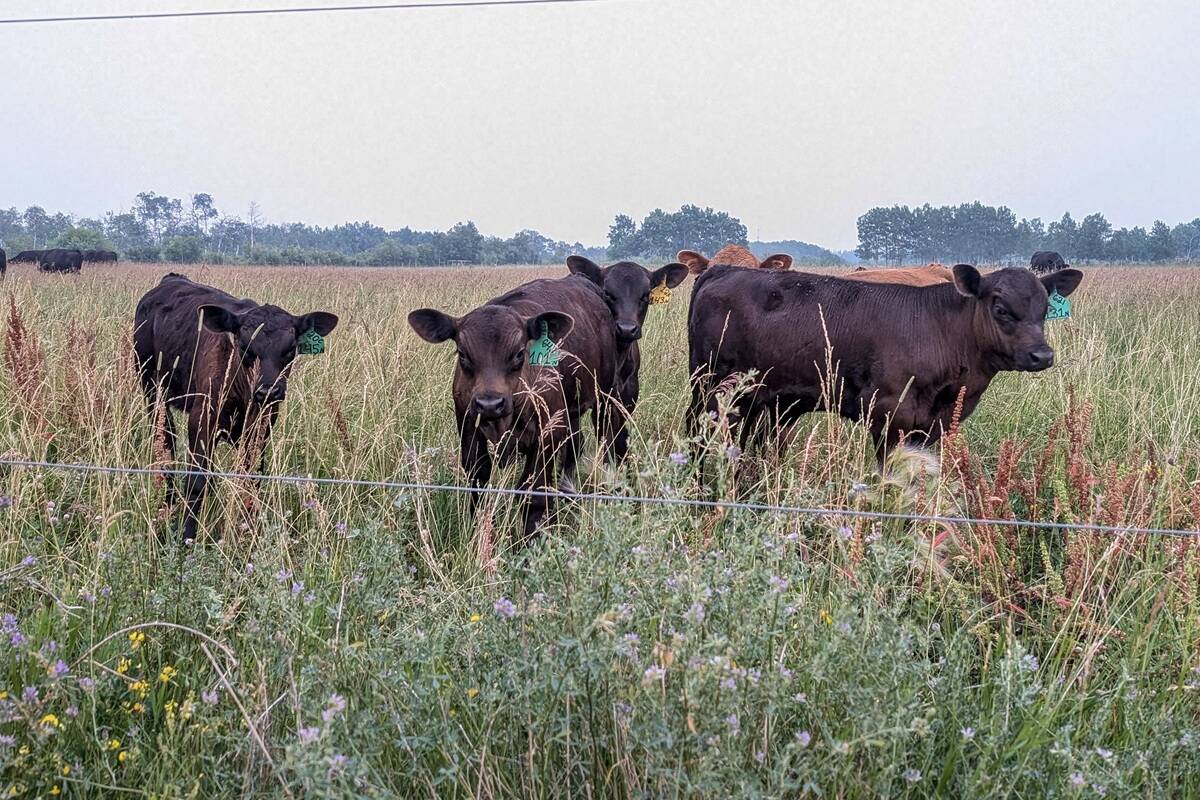The mandatory country-of-origin labelling (COOL) requirements that now hang over Canadian beef in U.S. retail meat cases are being leveraged in some regional-level stores to build “unique” store brands.
That’s according to the Beef Information Centre, a marketing and communications arm of the Canadian Cattlemen’s Association, which said in a release Friday that it’s been working with U.S. customers to build branded beef programs.
“Retailers recognize that development of private label and branded beef programs are key to profitability and that Canadian beef can deliver on the consistency and quality attributes required for a successful branded program,” the centre said.
Read Also

‘Not a happy Trump supporter’: U.S. Cattle ranchers hit by push for lower beef prices
Much like the price of eggs during the Biden administration, the cost of beef has become an emblem of the affordability crisis in Donald Trump’s America. Beef prices hit record highs earlier this year as the cattle herd shrank and consumer demand remained strong.
“The target is regional retailers who, in order to stay competitive, are looking to develop a brand — a brand that can deliver specific desirable attributes for their market, every time, and at the volumes required,” BIC chairman and Ontario feedlot operator John Gillespie said in the release.
As an example, BIC cited Pennsylvania-based Stauffers of Kissel Hill, which operates eight supermarkets in and around Harrisburg and Lancaster.
“SKH wished to develop a brand that would be widely recognized and accepted in its market area, with attributes that could not be easily matched by the competition,” BIC said.
SKH, the centre said, has now been paired with a Canadian packer to source a “certified corn-fed, AAA grade Canadian beef program” labeled “Stauffer’s Choice Beef. The on-pack labels identify the beef as Product of Canada, BIC said.
SKH shoppers have accepted the brand and its Canadian sourcing because the eating experience has consistently met or exceeded their expectations, BIC quoted SKH meat manager John Gerlach as saying.
“The program has been extremely successful, with SKH reporting a strong double digit increase in meat department sales over the past two years,” Gillespie said.
Bright red
BIC also cited Maryland-based Panam Supermarkets, which sell primarily to the Hispanic market and are working with Cargill’s Ontario-based beef packing facility, Better Beef.
Panam is selling product under its own brand, associated with Better Beef’s brand, BIC said. “The Hispanic consumer prefers bright red meat colour and white fat, two attributes that Canadian beef delivers consistently.
“Under the Canadian grading system, only carcasses with white fat and bright red meat are selected for the top grades: Canada Prime, AAA, AA or A,” which are colour requirements unique to the Canadian grading system, BIC said.
COOL legislation, passed by the U.S. government in June 2008, requires country-of-origin labelling for beef, pork, lamb, chicken and goat meat, and certain perishable commodities sold at retail outlets in the U.S.
The Canadian government in October launched a challenge of COOL at the World Trade Organization, contending that “in the context of the integrated North American beef and pork supply chains, U.S. COOL has resulted in additional and unnecessary costs being imposed on Canadian cattle and hog exports.
“U.S. processors, for instance, have to segregate Canadian animals and the meat from these animals at their facilities, which generates additional costs. Because of these additional costs, some processors no longer buy Canadian animals, buy them only on certain days, or buy them at a discounted price.”
But Canada remains the largest supplier of grain-fed beef to the U.S., exporting over 300,000 tonnes per year, BIC said Friday.
Citing a study of U.S. consumers last fall, BIC said product identified as Canadian beef drew a “strong response” with over 76 per cent agreeing when consumers were asked if Canadian beef is a premium product.
The study also found Canadian beef has a “positive position in consumers’ minds,” as 59 per cent of participants agreed Canadian beef “came from a wholesome, natural environment,” BIC said.














